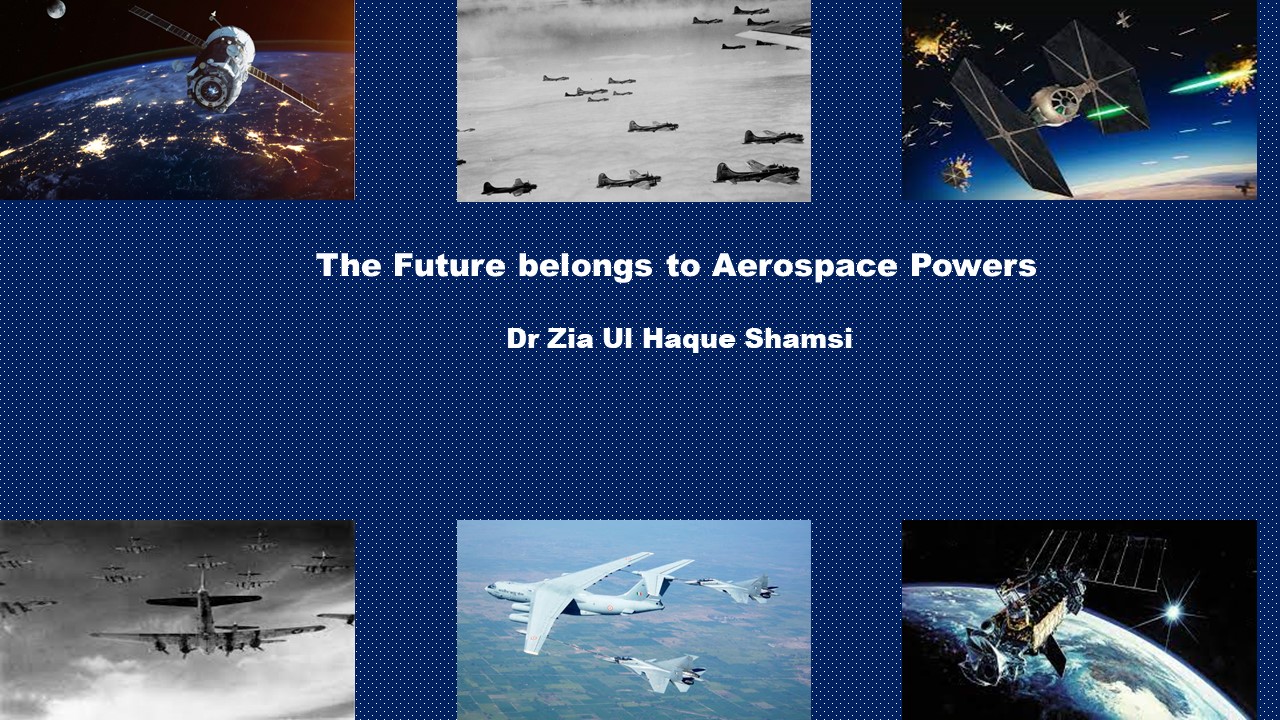The onset of the twentieth century saw the emergence of air as a new medium for warfare that would be transformed into battlegrounds within the space of little over a decade. Despite their very basic form used to observe the battlefield, airplanes gave immense advantage to the user over the enemy forces. True to its characteristics of speed, reach, and height, airpower had evolved into an extremely lethal, useful, and efficient military means by the end of the twentieth century. Airpower was initially defined as “the ability to project military force in the third dimension,” and therefore, the primary purpose of any air force was to achieve air supremacy to dominate different battlegrounds in any conventional conflict.
The next medium explored for the development of new warzones was space. The space missions had started within a decade of the culmination of World War II, when the erstwhile Soviet Union successfully launched its first satellite Sputnik 1 on 4th October 1957. While Soviet’s satellite was crew-less, only a year later, the US launched its first manned spaceflight under the Project Mercury in 1958. The race to achieve mastery in space had already begun between the two superpowers of the time.
With the development in technology and the inclusion of space as a medium or the enabler and an independent domain, the definition of airpower has undergone substantial change in its essence. Airpower is now referred to as “the integrated employment of all air and space forces to control and exploit the air and space environments to achieve national security objectives.”
Likewise, efforts were made to define Aerospace Power also, because as a term Aerospace denotes both atmosphere and space. Aerospace as a concept is unique in the sense that it integrates necessary tools needed as part of the airpower to integrate with space equipment such as satellite, navigation, information, reconnaissance, surveillance, weather observation, and geospatial data. Aerospace power would continue to enjoy the inherent flexibility of airpower, with the addition of real-time data on the enemy’s sensitive installations, defenses, and intended moves.
While the purpose of reaching the space was primarily to improve communications, soon the elements of surveillance and reconnaissance crept in to keep an eye on the adversary. Typical to security-insecurity dilemma, both the superpowers of the Cold War era continued to send space missions with a purpose to develop capabilities to assist their land missions from space-based satellites. Hence, the need to develop counter-space weapons became a priority to deny the use of space for military purposes by the adversary.
While some nations were still developing fourth and fifth-generation fighter aircraft, the advanced countries had embarked upon developing cutting edge smart weapons using emerging technologies such Artificial Intelligence (AI), 5G and Internet of Things (IoT), Robotics, Hypersonic Vehicles, Directed Energy Weapons (DEW), Lethal Autonomous Weapons (LAWS), etc.
While the debate continues on the legal, moral, and ethical use of space for military use, the fact of the matter is that space as a medium or the enabler has already been politicized and therefore weaponised. Most of the advanced and developed states have already established their Space Commands.
The purpose and objectives of the United States Space Command (USSPACECOM) are to organize and manage space operations to deter and defeat aggression in or form space. The US Space Command has invested heavily in space-related programs to defend its vital interests along with its allies.
Likewise, The Russian Space Forces are also established to provide aerospace warning, air, and space sovereignty. Interestingly, when the global powers define their objectives to defend and further their interests, it is meant that they would utilize all available means to achieve that.
Similarly, China has also restructured its space forces which also have control over electronic and cyber warfare. European Union is also not far behind in the race to achieve mastery in space technologies because NATO has already declared space as the fifth domain besides cyber security, land, air, and sea. Whereas, UK is following an independent plan of space development, which will assist Command and Control of requisite defences of their space capabilities.
It is necessary to mention that nearly each of the relatively developed states has a vibrant space programme already underway at different stages. However, the programmes of most of these states are primarily aimed at defending their satellites, monitoring the weather phenomenon, getting assistance for navigation, and access to geospatial information. Some of these states include Germany, France, Japan, Australia, Canada, Turkey, South Africa, and Brazil.
In the South Asian region, India has been actively pursuing its space programme since the 1960s. However, India took a major leap in its space initiatives by conducting an anti-satellite test in March 2019. With this test, India joined the exclusive club of China, Russia, and the United States in terms of deploying anti-satellite capability. India also conducted an exercise in July 2019 to integrate its space-related men and machines from all services.
Most of the advanced air forces are transforming themselves into aerospace powers to have the global perspective because the future belongs to the mastery in space.
Dr. Zia Ul Haque Shamsi is the author of the book ‘Nuclear Deterrence and Conflict Management Between India and Pakistan’. He is presently working as the Director at the Centre for Aerospace & Security Studies (CASS). The articl was first published in Daily Times. He can be reached at cass.thinkers@gmail.com
Image Source: Etfa Khurshid Mirza




